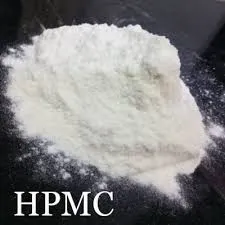
Σεπ . 23, 2024 16:59 Back to list
Methods for Dissolving Hydroxyethyl Cellulose Effectively and Efficiently in Various Solutions
How to Dissolve Hydroxyethyl Cellulose
Hydroxyethyl cellulose (HEC) is a versatile water-soluble polymer widely used in various industries, including pharmaceuticals, cosmetics, and food. Its ability to form viscous solutions makes it an essential ingredient in many products, such as gels, creams, and thickening agents. However, successfully dissolving HEC can be a little tricky due to its unique properties. Here’s a step-by-step guide on how to effectively dissolve hydroxyethyl cellulose.
Step 1 Choose the Right Temperature
The solubility of HEC can be influenced by temperature. Generally, warm water can help facilitate the dissolution process. Aim for a temperature between 60 to 80 degrees Celsius (140 to 176 degrees Fahrenheit) to enhance the solubility of HEC. However, it’s important to avoid boiling the water, as excessive heat can degrade the polymer, affecting its properties.
Step 2 Measure the Right Ratio
Start with the correct ratio of HEC to water. A common concentration for thickening applications is between 1% to 3% HEC by weight. For instance, if you are preparing a 1% solution, dissolve 1 gram of HEC in 100 milliliters of water. Using precise measurements ensures consistent results and optimal performance of the final product.
Step 3 Gradual Addition
how to dissolve hydroxyethyl cellulose

To prevent clumping, add the HEC powder slowly and gradually to the warm water while continuously stirring. It is crucial to create a vortex in the liquid by using a mechanical stirrer or a whisk. This ensures even distribution of the powder and prevents it from forming lumps, which can be difficult to dissolve later.
Step 4 Allow Time for Hydration
After adding the HEC, allow the mixture to sit for about 15 to 30 minutes. During this time, the hydroxyethyl cellulose will hydrate and swell, further enhancing its solubility. Stir the mixture occasionally to ensure that any settled particles are re-dispersed.
Step 5 Fine-Tuning the Solution
Once the HEC is fully dissolved, you may notice that the solution appears cloudy or gel-like. If necessary, you can dilute it with additional water to achieve your desired viscosity. Mixing until homogeneous will ensure a uniform consistency throughout the solution.
Conclusion
Dissolving hydroxyethyl cellulose requires a careful approach to achieve the desired consistency and functionality. By controlling the temperature, measuring accurately, adding the powder gradually, allowing for hydration, and finetuning the solution, you can successfully create a robust HEC solution suitable for various applications. Whether for personal care products or industrial uses, mastering the dissolution process of HEC will enhance your formulations' effectiveness and quality.
-
The Widespread Application of Redispersible Powder in Construction and Building Materials
NewsMay.16,2025
-
The Widespread Application of Hpmc in the Detergent Industry
NewsMay.16,2025
-
The Main Applications of Hydroxyethyl Cellulose in Paints and Coatings
NewsMay.16,2025
-
Mortar Bonding Agent: the Key to Enhancing the Adhesion Between New and Old Mortar Layers and Between Mortar and Different Substrates
NewsMay.16,2025
-
HPMC: Application as a thickener and excipient
NewsMay.16,2025
-
Hec Cellulose Cellulose: Multi functional dispersants and high-efficiency thickeners
NewsMay.16,2025







